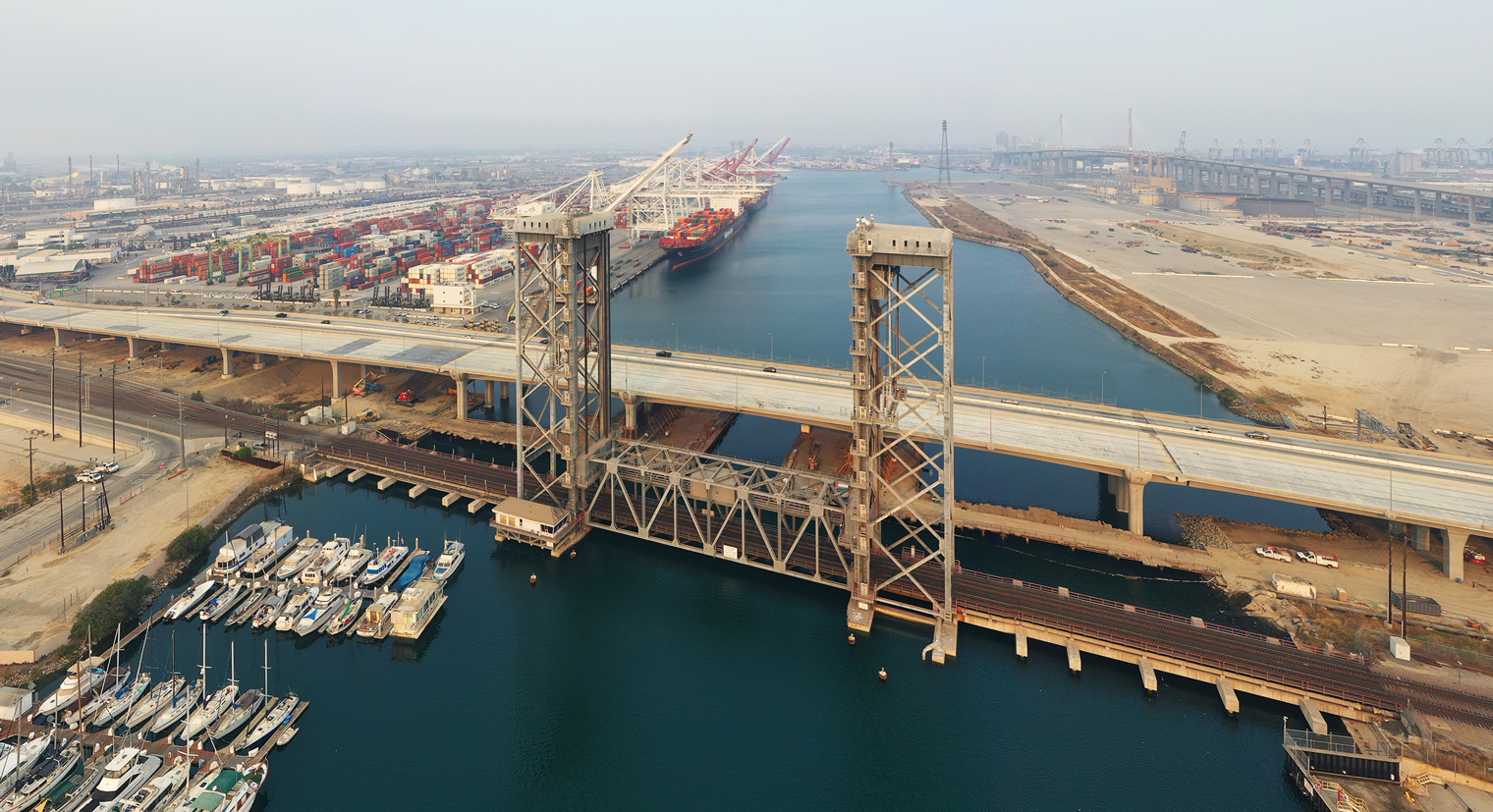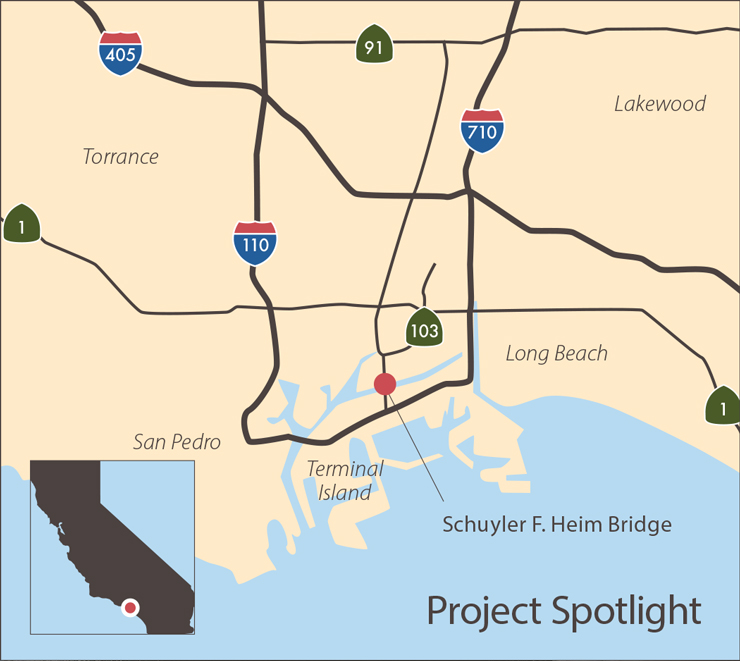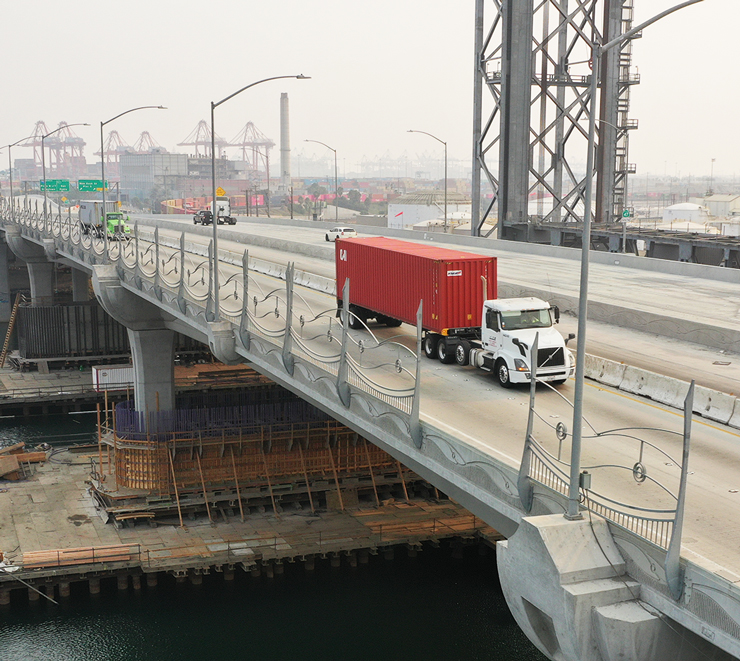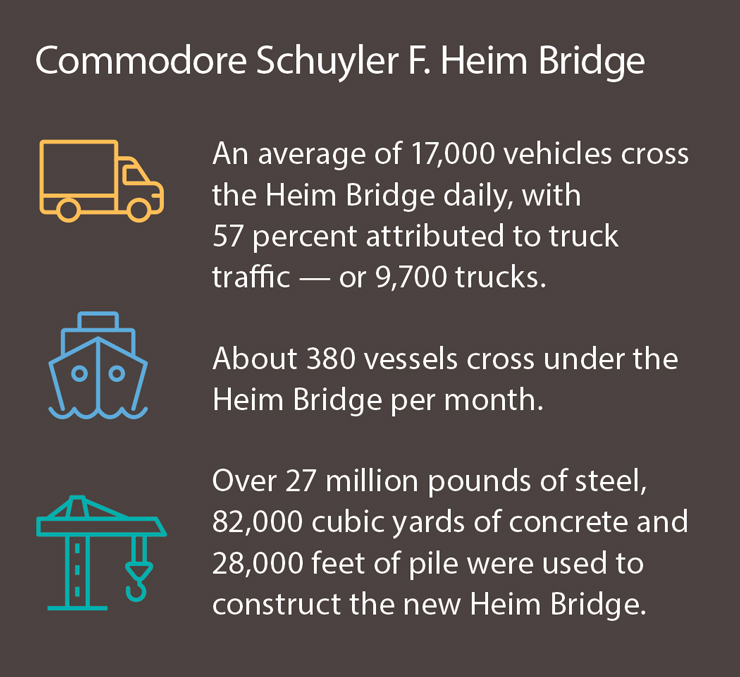Project Spotlight: Schuyler F. Heim Bridge

South State Span Replaced After Nearly 75 Years Linking to Busy Ports

The Commodore Schuyler F. Heim Bridge was constructed from 1946 to 1948 by the U.S. Navy as a steel vertical-lift bridge. It is one of three bridges that connect Terminal Island in Los Angeles to Long Beach and San Pedro.
But after years of distinguished service, the original Schuyler Heim Bridge had done its duty. It was time for a new span across the critically important passage.
The Schuyler Heim Bridge Replacement Project demolished the outdated manual, vertical-lift bridge and replaced it with a vertical fixed concrete box-girder bridge to meet current seismic standards. The new bridge opened to traffic in September 2020.
In addition to being seismically deficient, the old bridge no longer had the capacity to meet shipment demands of the ports of Long Beach and Los Angeles, which rank among the busiest terminals in the world. See the dedication video.
The bridge project replaced the original six-lane bridge with a seven-lane bridge that includes a new southbound auxiliary lane and standard emergency 10-foot shoulders. The previous Schuyler Heim Bridge had three nonstandard 11-foot wide lanes in each direction with no shoulders. The new bridge features three standard 12-foot-wide lanes in each direction, as well as the shoulders.

The project required several permits and included more than 100 environmental commitments with input from the state Regional Water Quality Control Board, U.S. Army Corps of Engineers, U.S. Coast Guard, Harbor Development, California Coastal Commission, California Department of Fish and Wildlife, and South Coast Air Quality Management District.

One of the greatest access challenges was to maintain traffic flow at all times amid ongoing construction. Building the new bridge also posed a number of engineering and construction challenges. Chief among them was installing eight foundation piles close to 200 feet long in the same footprint of the existing bridge foundation.
The new Schuyler Heim Bridge is now providing a safe and reliable transportation network that serves all travelers, respects the environment, and supports goods movement to and from the ports and the region. The trucking industry now benefits from the new bridge, with a free-flowing path to Terminal Island.
Sources: Dan Leon, Senior Transportation Engineer, Mike Francis, Supervising Bridge Engineer; Peter Jones, Public Information Officer, Caltrans District 7
- Director's Message
- Mile Markers
- Heading in a New Direction
- Driving Down Greenhouse Gas Levels
- Strategic Plan Broadens Caltrans Mission
- Making Strides Toward Saving Lives
- Wildlife Passages
- Project Spotlight: Schuyler F. Heim Bridge
- Project Spotlight: Echo Summit Bridge
- Paving the Way for a More Efficient Travel System
- Project Database Goes Virtual
- Collaboration Dials Down Conflict
- New Laws Address Climate Change Impacts, Worker Safety
- With Shredded Tires, Pavement Is on a Roll

